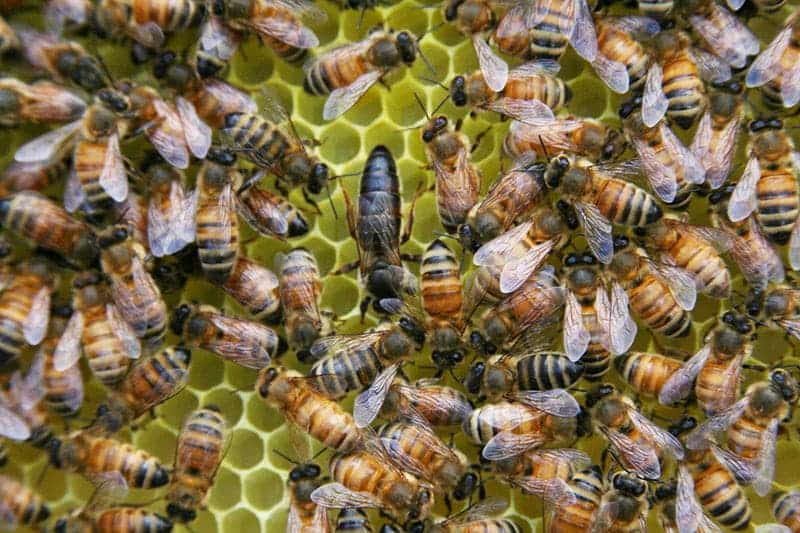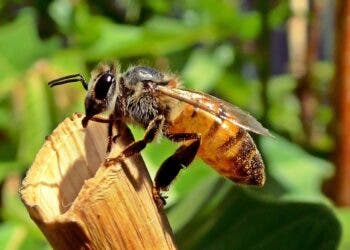
In many social species, the reproductive strategies of males and females are so different that they often cross the barrier into conflict. Take honeybees, for instance. A new study found that inseminated honeybee queens can become visually impaired, thereby reducing their chances of mating with other males.
The sexual arms race
Males often employ strategies that increase their fertilization success whereas females tend to want the best genes for their offspring. Honeybee queens have a short of a period of time during their early lives when they fly out of their hives to mate with as many males as they can in order to enhance genetic diversity, thus improving hive health.
After her first flight, a queen may embark in subsequent flights out of the hive to find more males. For males which already mated with the queen, this behavior is against their agenda of passing down their own genes to offspring. So, to null the competition, the males have developed a biological trick to offer them a sexual advantage.
Previous observations have suggested that insemination alters the activity of genes connected to vision in the queen’s brain. In a new study, researchers at the University of Copenhagen in Denmark and the University of Western Australia sought to verify this hypothesis.
The study showed that, indeed, seminal fluid can trigger changes in the activity of vision-related genes in honeybee queens. In experiments, queens that were inseminated with seminal fluid were less responsive to light whereas, queens that were exposed to an inert saline solution could sense the stimulus. What’s more, tracking devices mounted on inseminated queens showed that the insects left for mating flights sooner but were also more likely to get lost and not return to their hives.
The findings, which were published in the journal eLife, show that males have developed this tactic in order to reduce a queen’s possibility to complete more mating runs. But the queens haven’t stood idle. To counter the debilitating effects of male sperm, the queens leave for mating flights sooner, which increases their chances of finding more mates and increase the genetic diversity of their colonies.
In the future, the researchers plan on conducting more studies that might determine whether this ‘arms race’ is affected by seasons, bee race, and geography. Beyond unraveling a fascinating fascet of mating in the animal kingdom, the findings could also find practical use. The information could be exploited by beekeepers whose business depend on queen mating success and hive health.
This is just an example out of numerous instances of male adaptions to sperm competition that gives rise to sexual conflict — i.e. traits that increase the fitness of one sex while reducing the fitness of the other. Male cockroaches that have become sperm depleted will guard females to enforce monogamy.
Other species employ strategies that involve blocking the female genital tract with a copulatory plug — there is evidence for this in rodents, in which a number of different ejaculatory proteins form the plug. And another way for males to maximize fitness returns when faced with the risk of sperm competition is to simply ‘care less’. Such males will either not mate with or allocate fewer resources to already mated females. If males allocate fewer resources (i.e., fewer sperm or smaller ejaculates), or are less willing to mate with nonvirgin females, this could reduce female fertility.






